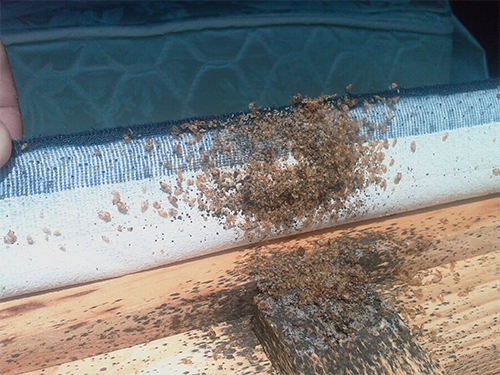Understanding the Lifecycle of Pests for Targeted Control Strategies
Comprehending the lifecycle of insects is an essential element of efficient insect management strategies. By understanding the different phases of advancement that parasites undergo, a much more targeted and accurate method can be embraced to control their populations. This knowledge not just drops light on the susceptabilities within the insect lifecycle however also leads the way for carrying out calculated procedures that can interrupt their development and reproduction cycles. With a deeper understanding of just how bugs flourish and develop, customized control methods can be developed to deal with certain points in their lifecycle, inevitably resulting in even more effective parasite management results.
Significance of Comprehending Insect Lifecycle
Recognizing the lifecycle of bugs is important for developing efficient and targeted control methods in parasite administration. By understanding the different phases a pest experiences from egg to grownup, pest control professionals can determine weak spots in the lifecycle where treatment can be most effective. As an example, recognizing when larvae are most active can assist determine the optimal timing for applying larvicides. In addition, recognizing the life expectancy of a pest species can help in predicting population growth patterns and prospective infestation risks.
Additionally, recognizing the specific environmental conditions necessary for each stage of the bug's lifecycle can lead choices on habitat modification or exclusion methods to minimize and interfere with the lifecycle pest populaces. This understanding enables pest monitoring professionals to implement positive procedures instead of counting entirely on responsive treatments, resulting in even more lasting and lasting pest control options. Inevitably, a complete understanding of parasite lifecycles encourages parasite control practitioners to customize their methods efficiently, decreasing environmental impacts and making the most of control results.
Key Stages in Pest Advancement
To efficiently execute targeted control strategies in pest monitoring, a vital element exists in adequately determining and recognizing the vital phases in pest development. Insect development typically consists of a number of crucial phases that are important for their lifecycle and management.

Susceptabilities in Bug Lifecycle
Throughout the different phases of an insect's lifecycle, distinct vulnerabilities emerge that can be purposefully targeted for effective control steps. One important susceptability hinges on the egg stage, where bugs are often more vulnerable to specific insecticides or biological control agents because of their soft outer shell, making them easier targets for treatment. Additionally, the larval or nymph phase provides susceptabilities as parasites go through quick growth and advancement, calling for high energy consumption that can be made use of by interrupting their food resources or introducing development inhibitors. Pupal stages, characterized by stability and transformation, supply a home window for targeted control through physical obstacles or particular therapies that prevent effective development. Lastly, grown-up bugs, while much more resilient as a result of their reproductive capability, can still be susceptible throughout mating or egg-laying activities, which can be disrupted with scent catches or sterilization methods. Comprehending these vulnerabilities in the pest lifecycle is crucial for creating efficient and specific control techniques that efficiently manage parasite populations while reducing environmental impact.
Executing Targeted Control Procedures

Implementing targeted control procedures commonly involves a multi-faceted method. This may include habitat adjustment to make the atmosphere less welcoming to pests, such as removing standing water for mosquito control or see this here sealing entrance factors for rats. Furthermore, biological control approaches can be made use of, where all-natural killers or pathogens are presented to maintain insect populaces in check.
Chemical control, such as the mindful application of pesticides, is an additional typical approach. It is vital to make use of these materials deliberately to lessen environmental effect and possible injury to non-target varieties - A1 Bed bug Exterminator houston. Integrated Parasite Management (IPM) approaches that combine numerous control measures in a collaborated and sustainable manner are commonly one of the most reliable in achieving lasting bug monitoring goals. By executing targeted control actions More Info based upon a comprehensive understanding of bug lifecycles, insect populations can be efficiently managed while lessening risks to human health and the atmosphere.
Boosted Insect Management Practices

In addition, the unification of organic control representatives, such as natural predators or virus of parasites, can aid lower reliance on chemical pesticides and promote a much more balanced community. Executing physical obstacles and traps can additionally belong to improved bug monitoring techniques, using safe and targeted solutions for pest control. Additionally, using pheromones and various other semiochemicals can interfere with pest breeding patterns and communication, causing lowered pest populaces with time.
Verdict
By determining essential phases in bug growth and vulnerabilities in their lifecycle, targeted control procedures can be implemented to reduce bug populations. Boosted insect administration practices can assist decrease the dependence on broad-spectrum pesticides and promote more sustainable and environmentally pleasant pest control approaches.
Comprehending the lifecycle of pests is crucial for developing efficient and targeted control techniques in bug administration. By understanding the numerous phases a parasite goes with from egg to grownup, bug control professionals can identify susceptible points in the lifecycle where intervention can be most effective. Inevitably, an extensive understanding of pest lifecycles empowers insect control practitioners find here to tailor their approaches properly, taking full advantage of and reducing environmental impacts control outcomes.
By implementing targeted control procedures based on a detailed understanding of pest lifecycles, parasite populations can be effectively controlled while minimizing risks to human health and wellness and the setting.
By recognizing crucial stages in parasite development and vulnerabilities in their lifecycle, targeted control steps can be carried out to decrease pest populaces.